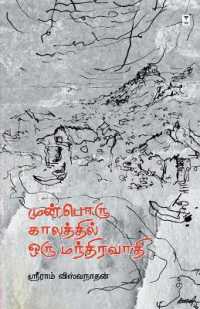- ホーム
- > 洋書
- > 英文書
- > Architecture
Full Description
Provides expert guidance on designing inclusive healthcare spaces
Healthcare environments significantly impact patient outcomes, care delivery, and overall well-being. Designing Healthcare Facilities for All Persons: Lessons from Rehabilitation is an essential resource for professionals seeking to create inclusive spaces that promote healing, equity, and accessibility. Drawing on best practices from rehabilitation settings—where patients navigate diverse stages of illness and recovery—this practical guide demonstrates how thoughtful design can remove barriers and support all individuals, regardless of ability, age, gender, or background.
As healthcare shifts toward holistic, value-driven care, the need for adaptable, patient-centered environments has never been greater. Author Lorissa MacAllister equips professionals with research-backed strategies to enhance patient experiences through equitable design solutions. Covering key facility areas and addressing the challenges of traditional healthcare spaces, the book presents actionable insights on fostering environments that empower independence and well-being.
Combining architecture and healthcare innovation to leverage space as a strategic tool, Designing Healthcare Facilities for All Persons:
Provides an evidence-based approach to designing inclusive healthcare environments that support all individuals
Covers a broad range of patient needs, including neurodiversity, physical ability, gender, and age considerations.
Offers actionable insights for identifying and eliminating physical barriers in healthcare spaces
Discusses the impact of space and place on patient outcomes, well-being, and equity in care
Features real-world case studies showcasing successful applications of inclusive design principles
Designing Healthcare Facilities for All Persons: Lessons from Rehabilitation is a must-have for architects, designers, healthcare administrators, and clinical practitioners committed to creating equitable and patient-centered care environments. It is also an excellent text for graduate-level courses in healthcare architecture, healthcare facility planning, and evidence-based design, as well as a valuable reference for professionals in healthcare management and design consulting.








